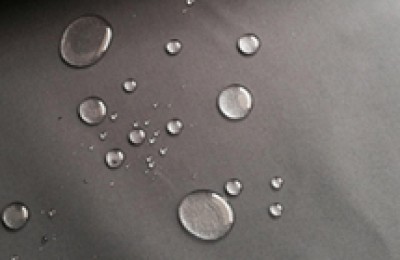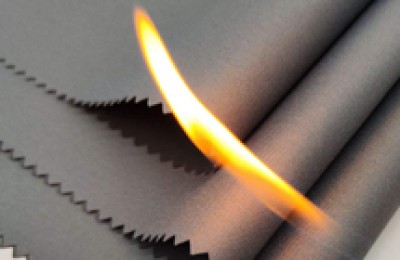Overview:
U.S. crude oil The 09 contract continued its slight rise last week, with a weekly increase of 1.51%, closing at $42.23, but did not break through last week’s new high. The Brent 10 contract also rose slightly last week, with a smaller weekly increase of 0.58%, closing at $44.95, which did not break the new high last week. Crude oil may have several slight corrections in the external market, but it will not change the overall upward trend of shock. The domestic SC crude oil 09 main contract rose sharply during the week, with a weekly increase of 0.18%. It fell 0.53% again in the night session, and the internal market was significantly weaker than the external market.
Overseas epidemics are still recurring. As of the reporting period, the cumulative number of confirmed cases in the United States reached 5.53 million, with more than 170,000 deaths, and more than 50,000 new confirmed cases in a single day. At the same time, the epidemic situation in Brazil, Russia, India, and South Africa is not optimistic. Among them, the cumulative number of confirmed cases in Brazil has reached 331,800. The single-day increase fluctuates greatly, and it was still above 40,000 on August 15th.
The weaving operating rate has rebounded for four consecutive weeks. The load of looms in Jiangsu and Zhejiang has rebounded slightly to 74%, and the texturing operating rate has rebounded slightly to 81%. The polyester plant continued to be put into operation, and the load remained stable at a high level. As of Friday, the load remained stable at 90.10%, and product inventory accumulated again.
PTA:
The average spot price of PTA increased sharply last Monday After rising to 3645 yuan/ton, it continued to fall during the week, reaching 3565 yuan/ton last Friday. Polyester continues to be put into production, and the load remains high and stable. PTA load dropped significantly last week, but 6 million tons of the equipment may recover this week, and supply may pick up again. The main PTA contract changed months last week to the 2101 contract. The main processing gap of TA disk narrowed significantly during the week, reaching 862 as of last Friday. TA’s spot processing gap narrowed significantly to 657. The PX-NPT spread is still fluctuating at a low level, reaching $156 as of last Friday.
Ethylene glycol:
As of August 10, East China The MEG port inventory in the main port area is approximately 1.484 million tons, an increase of 14,000 tons from the previous period. According to shipping reports, from August 10 to August 16, the total arrival volume of the four major ports is expected to be 274,000 tons, which is a high level. Overseas maintenance is planned to be carried out from August to November. Shipments from the mainstream reservoir areas of Zhangjiagang and Taicang have improved significantly recently, and we are paying attention to the sustainability of shipping preferences. The actual arrival volume is generally significantly lower than the forecast arrival volume, and port delays are still serious.
Cost and Profit
1 Raw Material Market
1.1 Crude oil, NPT, PX
Based on cfr Japan naphtha, naphtha (cfr Japan) fluctuated and rebounded last week. It rose to US$399/ton five times. The U.S. crude oil 09 contract continued to rise slightly last week, with a weekly increase of 1.51%, closing at $42.23, but did not break through last week’s new high. The Brent 10 contract also rose slightly last week, with a smaller weekly increase of 0.58%, closing at $44.95, which did not break the new high last week. Crude oil may have several slight corrections in the external market, but it will not change the overall upward trend of shock. The price difference between naphtha and Brent crude oil fluctuated and widened last week, and was around US$70 as of last Friday; the price difference between naphtha and WTI crude oil followed a similar trend, and was around US$90 as of last Friday. The price of PX (cfr China) fluctuated last week and rose to US$555/ton last Friday. The PX-NPT spread is still fluctuating at a low level, reaching $156 as of last Friday. PX Asia’s operating rate dropped slightly from last week, while PX China’s operating rate rebounded slightly from last week.
2 Changes in costs and profits
The average spot price of oil-based ethylene glycol moved slightly lower last week, reaching 3,710 yuan last Friday. The average domestic price is about 3,700 yuan, a slight decrease of 10 yuan from the price center last week. The equivalent coal contract price is about 3,500-3,550 yuan. The chart is based on the nearby spot price – 3,400 yuan/ton. Coal-based load remained stable at a low level and declined slightly. The loss level of coal-based ethylene glycol has been repaired for four consecutive weeks. The highest regional loss was around -1,100 yuan and the lowest was around -500 yuan. The cash flow loss of externally produced ethylene glycol continued to recover to around -$56. The cash flow loss from naphtha to ethylene glycol increased slightly to around -$30/ton. The cash flow loss of the methanol MTO production route intensified again this week, reaching around -873 yuan/ton as of last Friday. All ethylene glycol process lines are still in full loss, and the direction of loss changes is divided. The continued recovery of coal-based profits may trigger the restart of the device.
Supply
1 Equipment maintenance status
2020 From August 1, 2020, the polyester production capacity base has been revised upward to 61.6 million tons, with an additional 250,000 tons of Baihong (Quanzhou, Fujian, supporting the production of industrial wire-grade chips), Hengyi New Materials (Haining, Zhejiang, supporting the production of civilian filaments) ) 250,000 tons device. Last week, Anhua’s 150,000 bottle slices were restarted, Hengli’s 200,000 slices were overhauled, and the output of other sporadic factories was adjusted. As of last Friday, polyester loading remained at 90.1%. Hengchao plans to start up a new 300,000-ton polyester filament plant on August 18; the new Hengli polymerization plant is postponed to August, and the time has not yet been determined.
Table 1: Recent major device changes in polyester:
Data source: CCF Zhongzhou Energy and Chemical Research Institute
PTA domestic devices: Zhejiang Huabin Petrochemical’s 1.4 million ton device is currently loaded at 90%, and is scheduled to be repaired for two weeks in mid-August; Honggang Petrochemical’s 1.5 million ton device will be shut down on 8.10 and resume on Saturday; Fuzhou The load of the 4.5 million tons unit of the chemical industry dropped to 70% near 8.12, and is expected to remain for a week. The load of PTA in mainland China dropped to around 82.3%.
Table 2: Recent changes in major PTA units :
Data source: CCF Zhongzhou Energy and Chemical Research Institute
B Glycol device: The overall load of ethylene glycol rebounded slightly last week, and the start-up load of coal-based equipment dropped again. As of August 13, the overall domestic ethylene glycol start-up load was 54.75%, of which the start-up load of coal-based ethylene glycol was 26.99%.
Table 3: MEG’s recent major device changes:
Data source :CCF Zhongzhou Energy and Chemical Research Institute
New device commissioning status: 200,000 tons of Xinjiang Tianye’s 600,000 tons/year coal-to-ethylene glycol device are expected to be discharged this week; Sinochem Quanzhou’s new 500,000 tons/year MEG unit has currently fed ethylene and is expected to be discharged in early September. Shanxi Woneng Chemical Technology Co., Ltd.’s 300,000 tons/year new syngas-to-MEG unit is scheduled to be put into operation in the near future. The product will be released at the end of August.
2PTA Inventory
PTA factory inventory remained stable at 5.5 days for eleven consecutive weeks. The inventory of PTA raw materials in polyester plants has remained stable at 10 days for seven consecutive weeks. PTA-converted total social inventory rebounded slightly last week – looking at the breakdown, PTA factory factory inventory and warehouse receipts both dropped significantly, polyester factory raw material inventory remained stable compared with last week, and last week’s increase came from polyester finished product inventory-converted TA in stock. In fact, inventory pressure is shifting downward. It is understood that the current PTA circulating inventory is not high, mainly because the structure of social inventory is mainly distributed in polyester factory bargain hunting stocks and PTA warehouse receipts, and it is not possible to form circulating inventory for the time being.
3 Ethylene glycol import and port inventory
The latest inventory of ethylene glycol port inventory on August 10 shows that the inventory has accumulated again compared with the previous period. As of August 10, the MEG port inventory in the main port area of East China was approximately 1.487 million tons, an increase of 14,000 tons from the previous period. According to shipping reports, from August 10 to August 16, the total arrival volume of the four major ports is expected to be 274,000 tons, which is a high level. Shipments from the mainstream reservoir areas of Zhangjiagang and Taicang have rebounded significantly recently, and the pressure on port inventory has eased. The actual arrival volume is generally significantly lower than the forecast arrival volume, and port delays are still serious.
Demand
1 polyester
1.1 Polyester operating rate and equipment changes
Last week, Anhua’s 150,000 bottle slices were restarted, and Hengli’s 200,000 slices were overhauled. Starting from August, polyester production capacity will be adjusted to 61.6 million tons/year. As of last Friday, polyester loads remained at 90.1% of last week’s levels. It remains the second-highest level just below 2018 levels. Among them, the operating rate of polyester filament rose slightly by 0.1% to 74.30%; the load of polyester bottle flakes rebounded sharply by 0.8% to 79.70%; and the operating rate of direct-spinning polyester staple fiber remained at 92.30% of the previous week’s level. The operating rate of direct-spun polyester staple fiber is still at the highest level in the same period in history; the operating rate of polyester filament has dropped to the lowest level in the same period in history; the operating rate of polyester bottle flakes has rebounded to near the equilibrium level.
1.2 Polyester Stock
As of last Friday, the equity inventories of POY, FDY and DTY in Jiangsu and Zhejiang polyester factories were 17.6, 18.8 and 29.4 days respectively. Filament stocks have all rebounded. Among them, POY stocks have increased by 2.3 days compared with last Friday; FDY stocks have increased by 1.5 days compared with last Friday, and DTY stocks have increased by 1.9 days compared with half a month ago. The relative inventory of polyester staple fiber with low absolute inventory has changed greatly. Last week, the inventory accumulated again to 4.3 days, an increase of 1.5 days from the previous period. Inventories of polyester bottle flakes remain near the 20-day level. The inventory of polyester staple fiber is the second lowest level only higher than the same period in 2019; the inventory of polyester filament and polyester bottle flakes both maintain the highest level in the same period over the past years.
2 Terminal situation
Last week, the overall loom and texturing starts in Jiangsu and Zhejiang increased for four consecutive weeks. As of now, the operating rates of looms and texturing are at 74% and 81% respectively.
The operating rate of dyeing and dyeing plants has rebounded since late July. The overall operating rate of printing and dyeing plants in August has increased significantly compared with July. As of now The average operating capacity of dyeing factories in Jiangsu and Zhejiang is estimated at 78%, an increase of 16 percentage points from mid-July. The inventory days of gray fabrics in sample weaving enterprises in Shengze area have continued to rise since 5.25. It is currently 45 days and has reached a maximum of 45.5 days. The inventory of gray fabrics has been repeated many times, and the turning point needs to be confirmed. This year’s off-season started earlier than in previous years due to the impact of the epidemic, and inventories began to accumulate continuously at the end of May (in previous years, gray fabric inventories did not begin to accumulate until at least late June to early July). The peak season in the second half of the year is approaching, and the inflection point of gray fabric inventory may continue under the peak season expectations. The transaction volume of China Textile City began to be better than the same period in previous years in late July. There was a slight decline in August, and we are paying attention to whether the trading volume can achieve peak season expectations in late August. We estimate that the peak season in the second half of the year may be delayed, and the intensity of the peak season will be weaker than in previous years, but better than in the first half of the year.
7090241290012.jpg”>
The operating rate of dyeing plants has rebounded since late July. The overall operating rate of printing and dyeing plants in August has increased significantly compared with July. As of now, the average operating rate of dyeing plants in Jiangsu and Zhejiang is estimated to be at 78%, an increase of 16 percentage points from mid-July. The number of days of gray cloth inventory of sample weaving enterprises in Shengze has continued to rise since 5.25 days. It is currently 45 days and has reached a maximum of 45.5 days. The inventory of gray cloth has been repeated many times, and the turning point needs to be confirmed. This year’s off-season is in Affected by the epidemic, the inventory began to accumulate earlier than in previous years, and inventory accumulation began at the end of May (in previous years, gray fabric inventory did not begin to accumulate until at least June to early July). The peak season in the second half of the year is approaching, and the inflection point in gray fabric inventory is expected to continue during the peak season. The transaction volume of China Textile City began to be better than the same period in previous years in late July. It declined slightly in August, and we are concerned about whether the transaction volume can achieve peak season expectations in late August. We estimate that the peak season in the second half of the year may be delayed, and the intensity of the peak season will be weaker than previous years, but better than the first half.
</p






